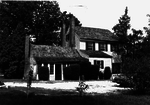North Point High School
North Point High School is a school for career and technology education (formerly science, technology, and industry). It is located in the far western area of Waldorf, Maryland, United States. At 311,000 square feet (28,900 m2) and with about 2,000 students enrolled, it is the largest high school in Charles County. It is also the second newest high school, having opened in 2005. Its mascot, the Eagle, was derived from the motto of Charles County, "The wild side of the Potomac... Where eagles soar!" Unlike most other high schools, which have all eight class periods per day, North Point operates on a unique four-block A/B day schedule (1A, 2A, 3A, 4A on A days and 1B, 2B, 3B and 4B on B days), A days and B days occur every other day of the week, which allows for longer 1 hour and 20 minute class periods, rather than the standard 50 minute period in other schools. At the start of the week, it would either be an A day or B day, depending on what day the previous Friday was (example: If Friday was a B day, Monday would be an A day). Classes begin at 8:05 a.m. and end at 2:50 p.m. every day.
Excerpt from the Wikipedia article North Point High School (License: CC BY-SA 3.0, Authors).North Point High School
Davis Road,
Geographical coordinates (GPS) Address Nearby Places Show on map
Geographical coordinates (GPS)
| Latitude | Longitude |
|---|---|
| N 38.641944444444 ° | E -76.976388888889 ° |
Address
Davis Road
20603
Maryland, United States
Open on Google Maps




